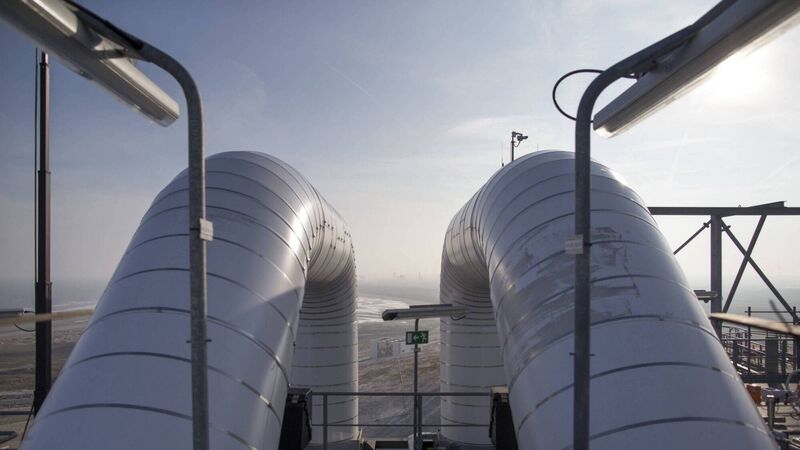Gas prices jump as LNG workers begin long-awaited strikes

Benchmark gas futures in Europe jumped as much as 13% on the news, which highlights the region’s vulnerability after last year’s energy crisis. Pic: Jasper Juinen/Bloomberg
Liquefied natural gas workers at key Chevron sites in Australia began partial strikes on Friday after talks failed to reach an agreement in a dispute that’s roiled global gas markets.
Benchmark gas futures in Europe jumped as much as 13% on the news, which highlights the region’s vulnerability after last year’s energy crisis.
Partial strikes began at the Gorgon and Wheatstone facilities, which accounted for about 7% of global LNG supply last year.
Members of the Offshore Alliance union said they will stop work completely for two weeks starting September 14.
The start of the industrial action marks the culmination of weeks-long discussions that have kept markets on edge.
Unions first threatened to pursue strikes at the Chevron sites and Woodside Energy Group’s facilities in early August. Since then, Woodside reached a compromise deal with workers, while Chevron and its workers remain apart on several key claims.
Friday’s partial strikes include work stoppage and bans on carrying out overtime and some other duties.
Chevron’s “bargaining performance has been the most inept effort of any employer the union has dealt with in the past five years and our members have had enough,” Offshore Alliance said in a post on Facebook earlier on Friday.
The impact on LNG shipments isn’t likely to be immediate, and gas consumption is currently muted in both Europe and Asia. Still, the prospect of disruptions to future supply has sent prices higher as it threatens greater competition for cargoes during peak demand in the northern hemisphere winter.
Friday’s initial strikes “appear lower level, designed to create costs and inefficiencies for Chevron, but not yet impact production materially,” said Saul Kavonic, an energy analyst at Credit Suisse Group. However, the situation is likely to change if a compromise isn’t found by September 14, according to Energy Aspects analyst Leo Kabouche.
Europe almost never receives fuel from Australia, but curbed LNG shipments to Asia would raise competition for alternative cargoes.
Even with the recent jump, Europe’s gas prices are just a fraction of last year’s records. However, they are still elevated compared with pre-crisis levels and most market players expect the high volatility to stay.
The continent’s gas storage sites are about 93% full, well ahead of the heating season, but inventories are not designed to cover winter consumption in full. The region relies heavily on stable LNG shipments after losing most of the pipeline gas from Russia in 2022.
Japan is the biggest buyer of LNG from Chevron’s Australian plants. While it isn’t clear whether the strikes will impact production, Osaka Gas, which has a stake in Gorgon, will consider alternatives if its supply is affected, a spokeswoman said. Tokyo Gas, which also have a stake in the plant, said it is checking on impact to its LNG procurement.
Tohoku Electric Power, which has a purchase agreement with Wheatstone, doesn’t think it will impact its procurement plans for the time being, according to a spokesperson.















